Solar Cell
Is the recipient of the grand prize for architecture and innovation for the sea as well as the special LAB award by the prestigious Jacques Rougerie Foundation international competition in architecture 2023 held at the Académie des beaux arts in Paris. Our award winning experimental response for sustainability of the near future is currently undergoing the process of possible prototyping and or realization.
It is simply impossible for human beings to understand the concept of time in relation to the existence of stone/-hill/-mountain/-cliff/-sea/-earth- and the history of the universe, the power of mother nature will always prevail. The proposed architectural intervention revolves around finding a mutual harmony between all elements whilst envisioning a state-of-the-art aesthetic that can primarily promote the integration of sea eco-design.
Marine ecosystems are aquatic environments with high levels of dissolved salt. These include the open ocean, the deep-sea ocean, and coastal marine ecosystems, each of which has different physical and biological characteristics. Biotic factors include plants, animals, and microbes; important abiotic factors include the amount of sunlight in the ecosystem, the amount of oxygen and nutrients dissolved in the water, proximity to land, depth, and temperature.. (National Geographic Society, 2022: online).
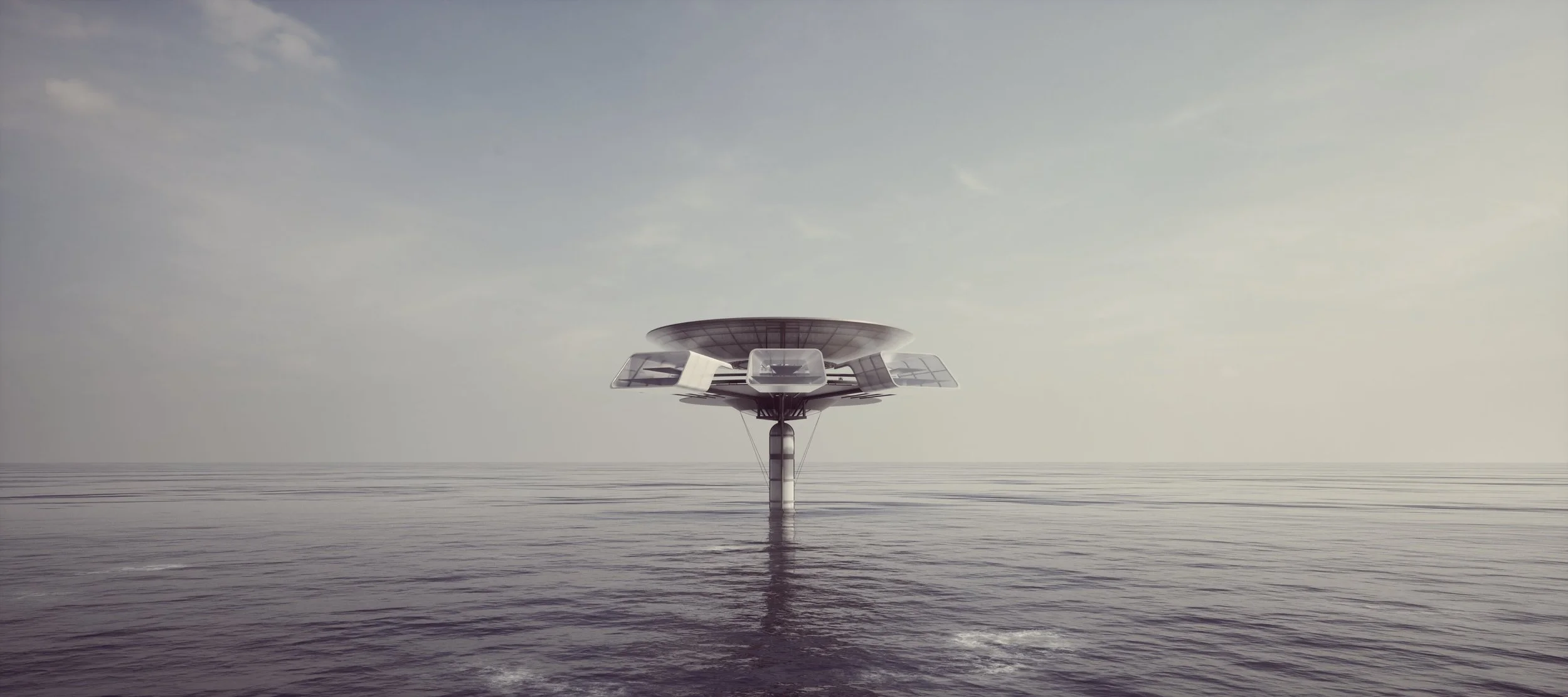
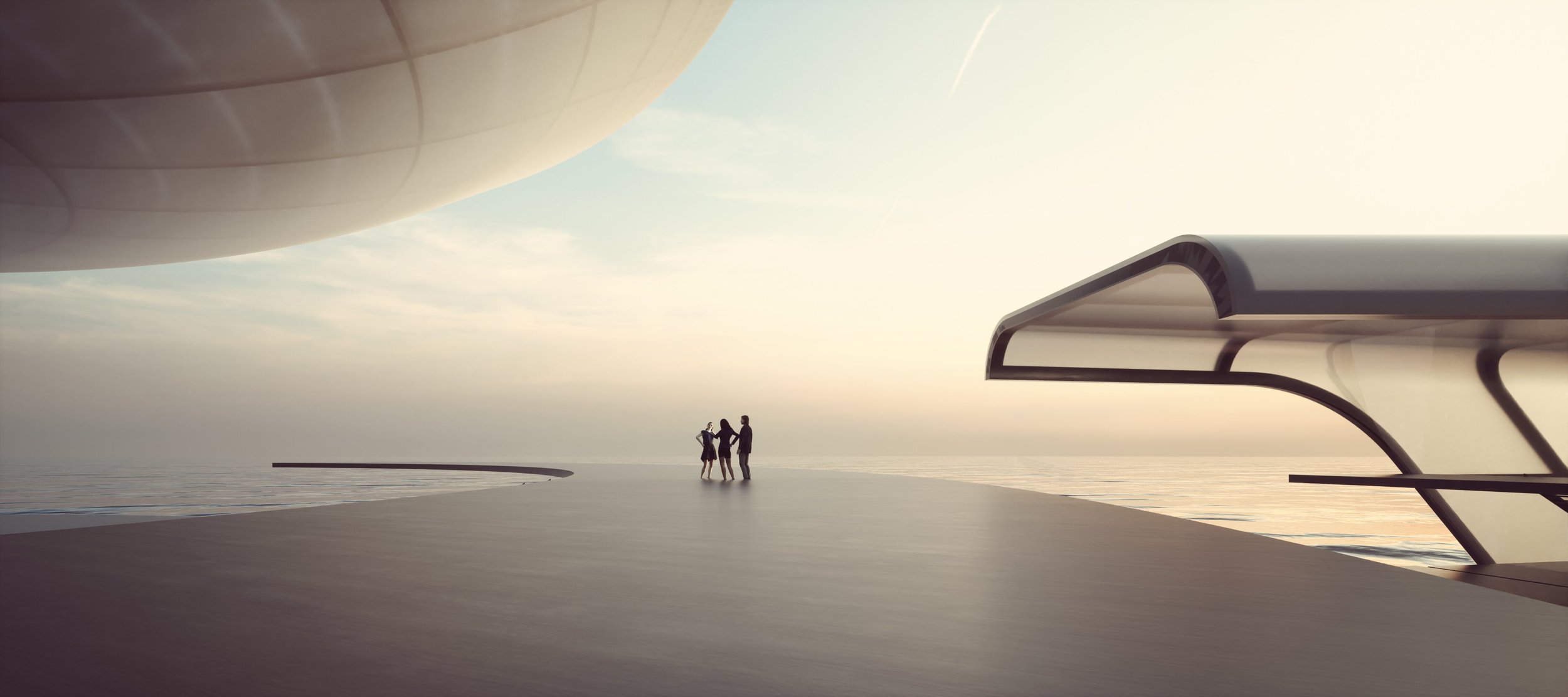
Solar Cell explores the two key connectors of the various abovementioned classifications of marine environments and the vast possibilities of energy or natural resources saving properties they possess: Salt & Sun. It will serve as a model for alternative resource supply with core focus on preserving and studying its direct environment through means of sustainable development. The consequences of the energy crises on building techniques require laminated, discontinuous construction forcing architects to consider the separate identities of inner and outer parts of the building envelope. The sun has risen and set in many cycles before you and will continue doing so after you are gone; how do we tread between nature’s delicate sheets to empower it whilst allowing the art of architecture to shine in a respectful way?
Our primary focus throughout the planning process was to maximize the flow, participation, connection, basic needs, and community of human interaction with the cell and its ecological surrounds. The most primal needs for the human being are nutrition (fresh water & food) and shelter, both generally difficult to come by at sea. Sunlight is one of the most important abiotic factors for marine ecosystems and is the key attribute to our bio-inspiration driven approach of designing a self-sufficient structure. Solar cell is based on the implementation of an autonomous system founded on the immense availability of the gloriously saline rich depths of the ocean. By converting sunlight to heat and storing it in molten salt it can supply, and store electricity and make it available on demand any time—day or night. This form of energy creation is inexpensive, available for commercial-scale needs and most importantly it is non–fossil fuel driven and has a very low impact on the environment. [Sheikh, 2014: online] This system, already used in the US, is an immediately implementable solution for clean energy harvesting.

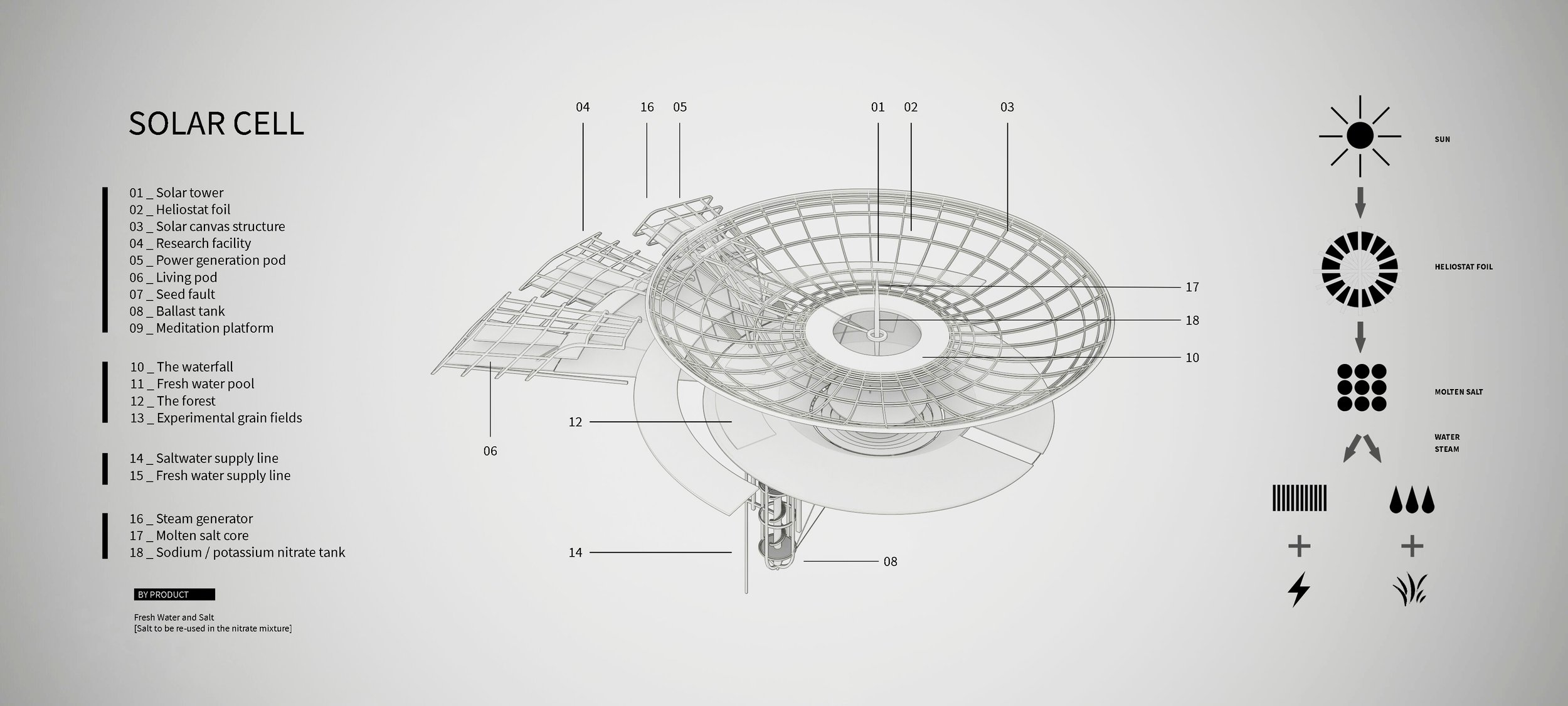
Our vessel, stabilised by the hydrostatic performance of a system of ballast tanks, has a central needle mimicking the formation of DNA systems (since water is life) stimulating the dynamic flow that eases throughout both X and Y axis, carrying salt up from the ocean to its respective locations. Atop the structure is a multifunctional shell that serves as a solar canvas as it is laced with heliostat foil, this solar system then heats up an immense tank full of sodium and potassium nitrates that are pumped up to the top of the tower. There the molten salt can reach temperatures as high as 565 degrees Celsius. When electricity is needed, the hot salt is used to boil water and produce high-temperature, high-pressure steam, which turns turbines that generate electricity. The benefit of using molten salt as both the energy collector that creates steam and the energy storage mechanism, however, is that it eliminates the need for expensive heat exchangers to go between different fluids. [Sheikh, 2014: online]
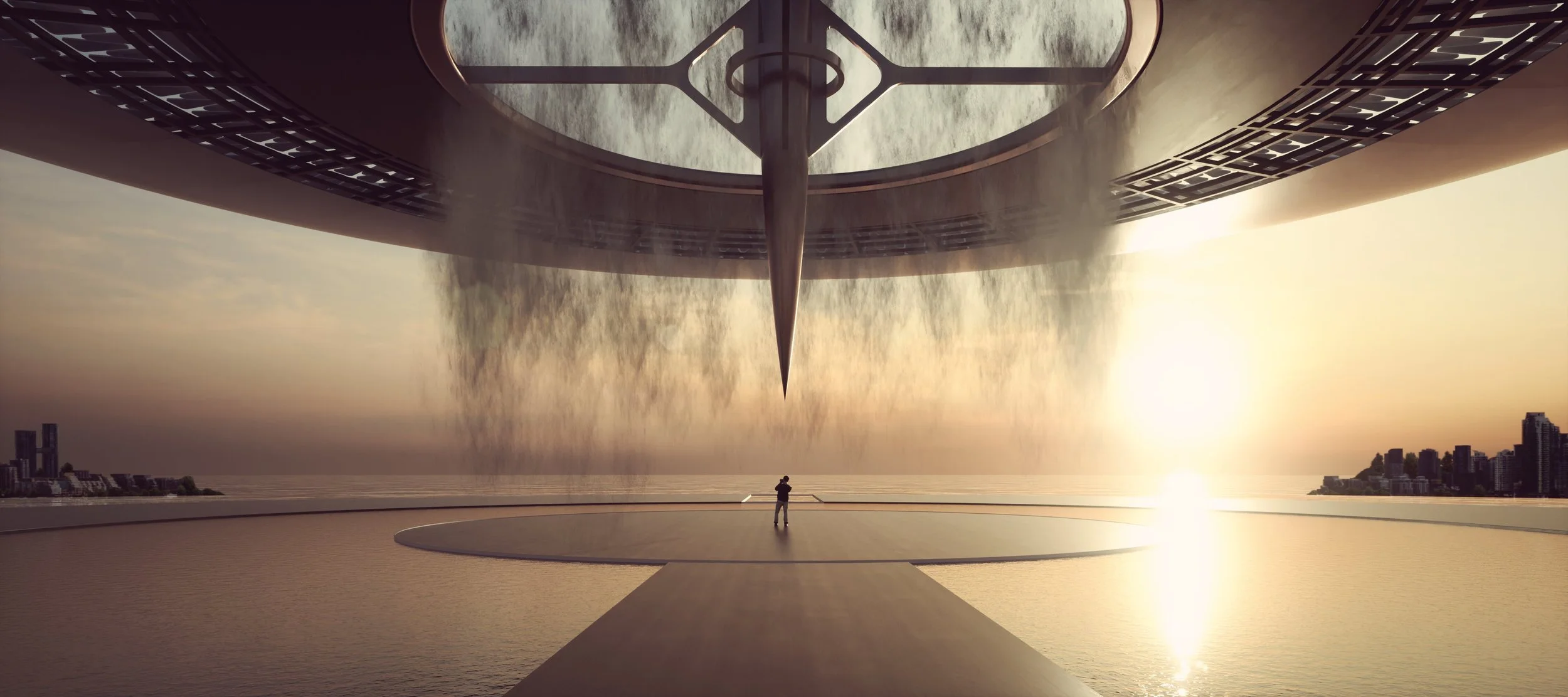
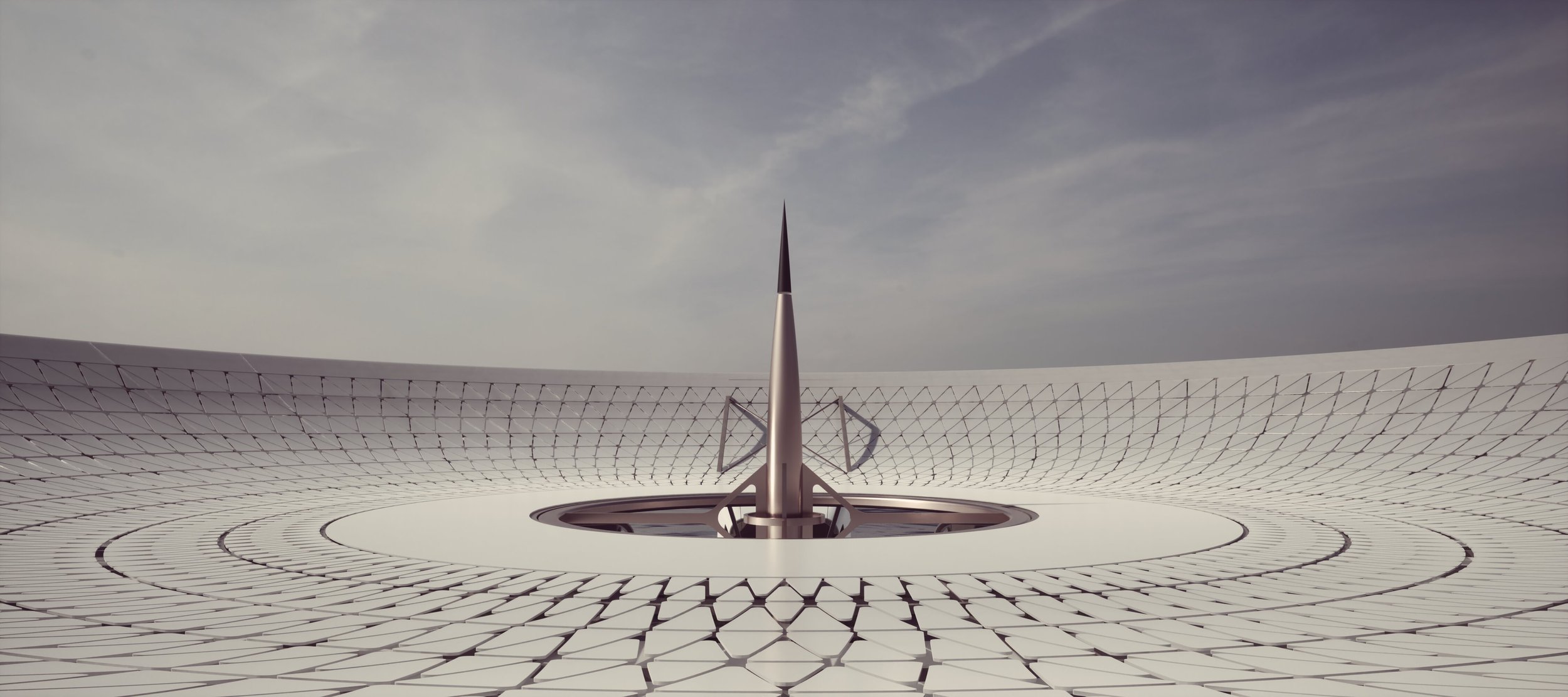
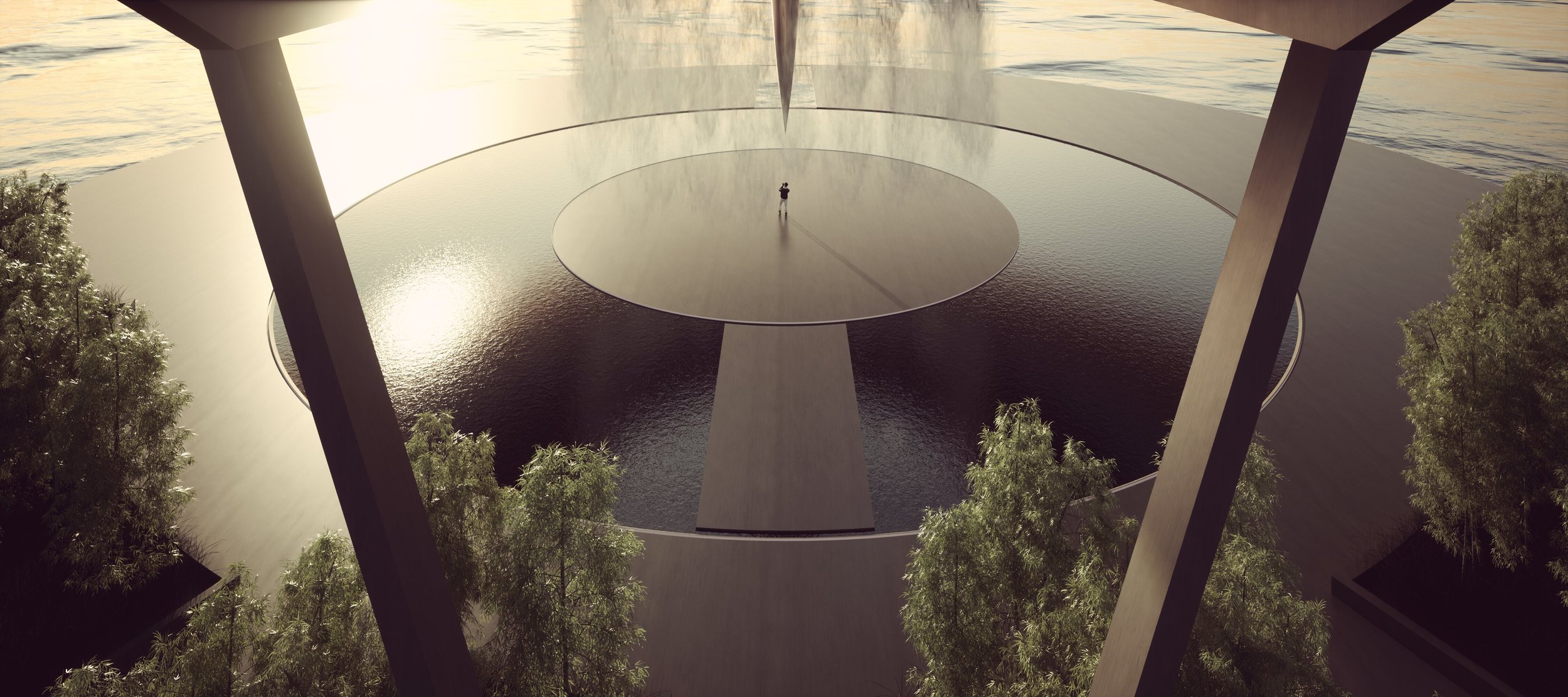
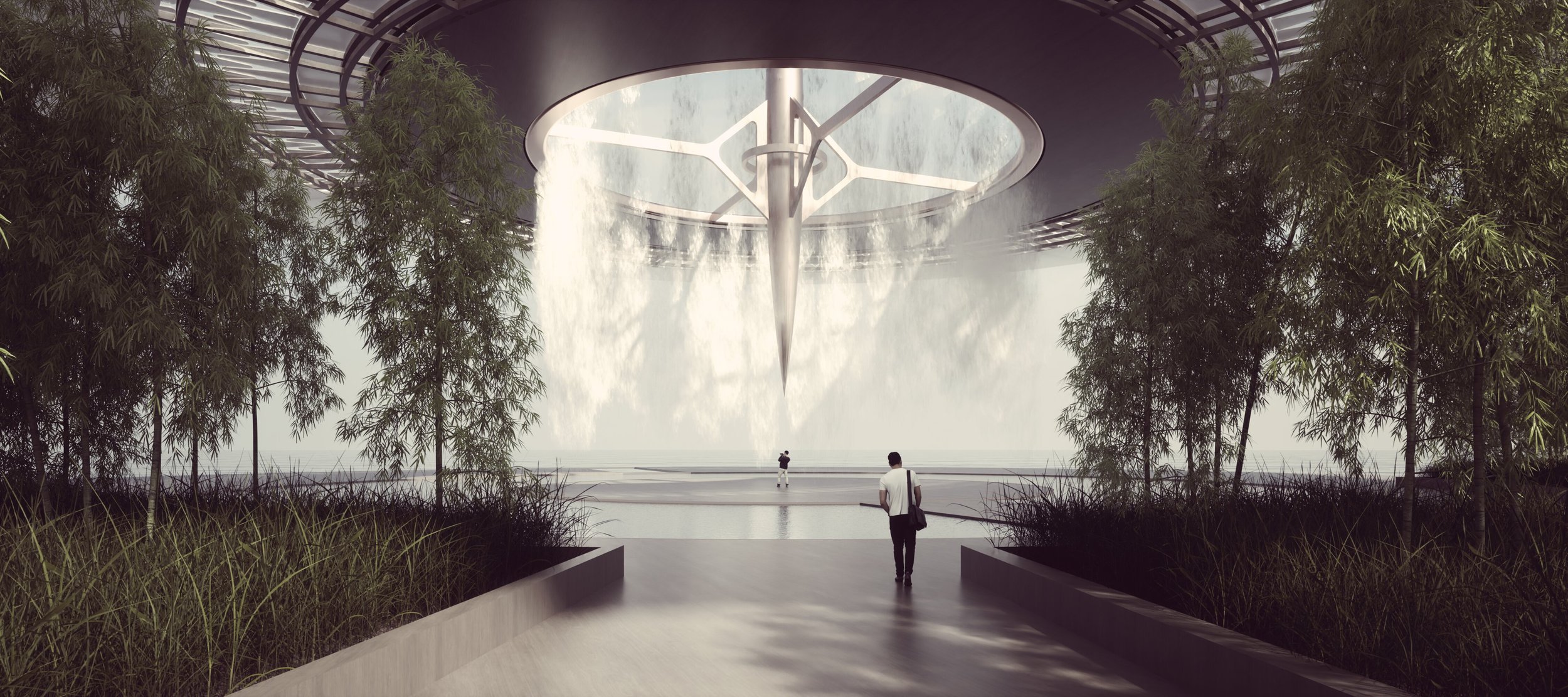
The fortunate by product of this system is fresh water, since water is life the water then becomes the literal core of the cell as a large freshwater waterfall. The waterfall creates a freshwater pool around which various essential crops and other nutrient rich landscaping beds are planted. Around this self-sustaining central environment canvas skinned pods rest, constructed along with the rest of the cell from timber, galvanised steel and glass elements serving as but not limited to shelter, storage, and research facilities to the user.
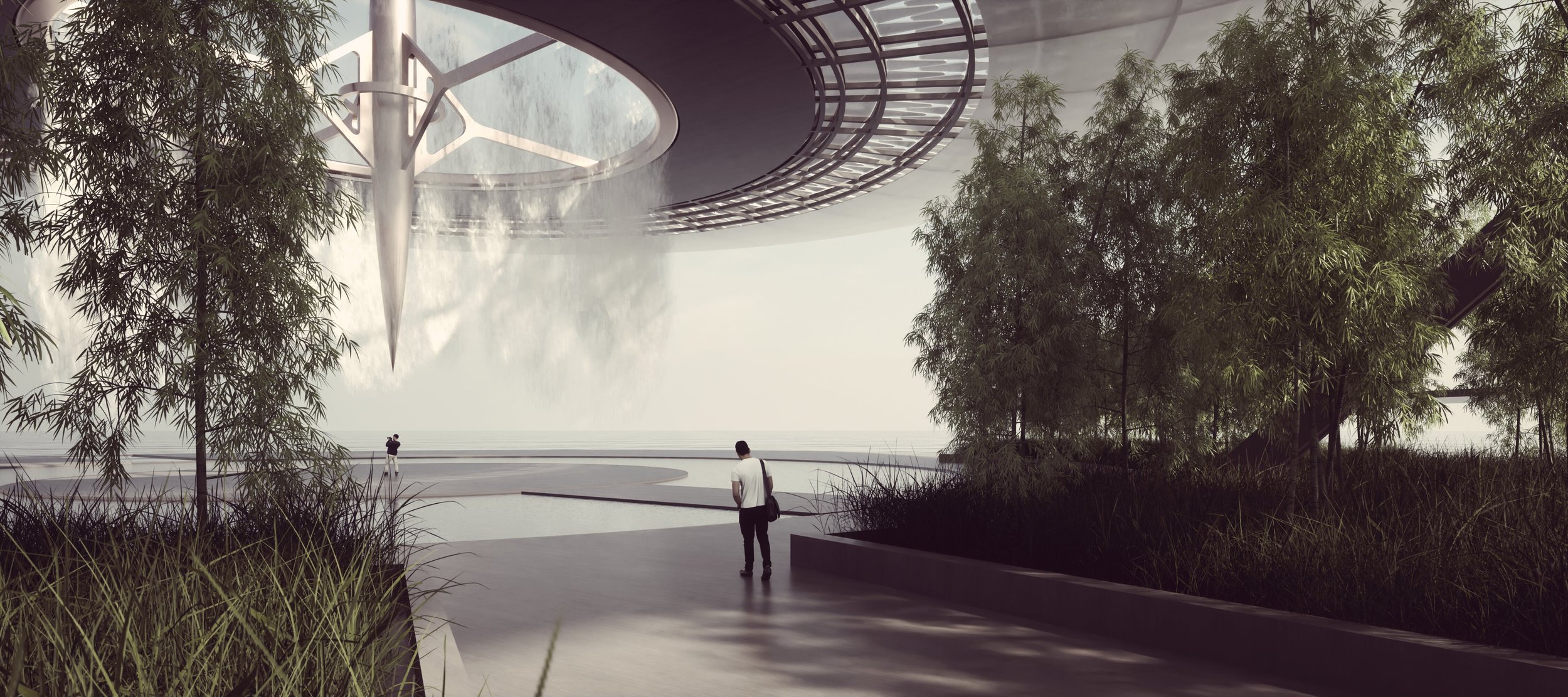
Solar cell can lend itself to a variety of coastal or open ocean locations and the needs individually required by these environments and its intended users. The cell serves as a pod of life, supplying fresh water, electricity, and crops. The model can serve large ships or smaller research vessels in the open or deep ocean where they can restock on said quintessential resources, as well as serve as a long stay base well equipped with the fundamentals to those dedicated to discovering, documenting, and exploring marine environments. On coastlines it can become a pod that supplies fresh water, crops and electricity to neighbouring coastal towns as well as a vessel that can accommodate inhabitants or researchers.
Along with its futuristic architectural aesthetic, innovative sustainable energy creation and self-sufficiency, the Solar Cell’s application possibilities are endless.


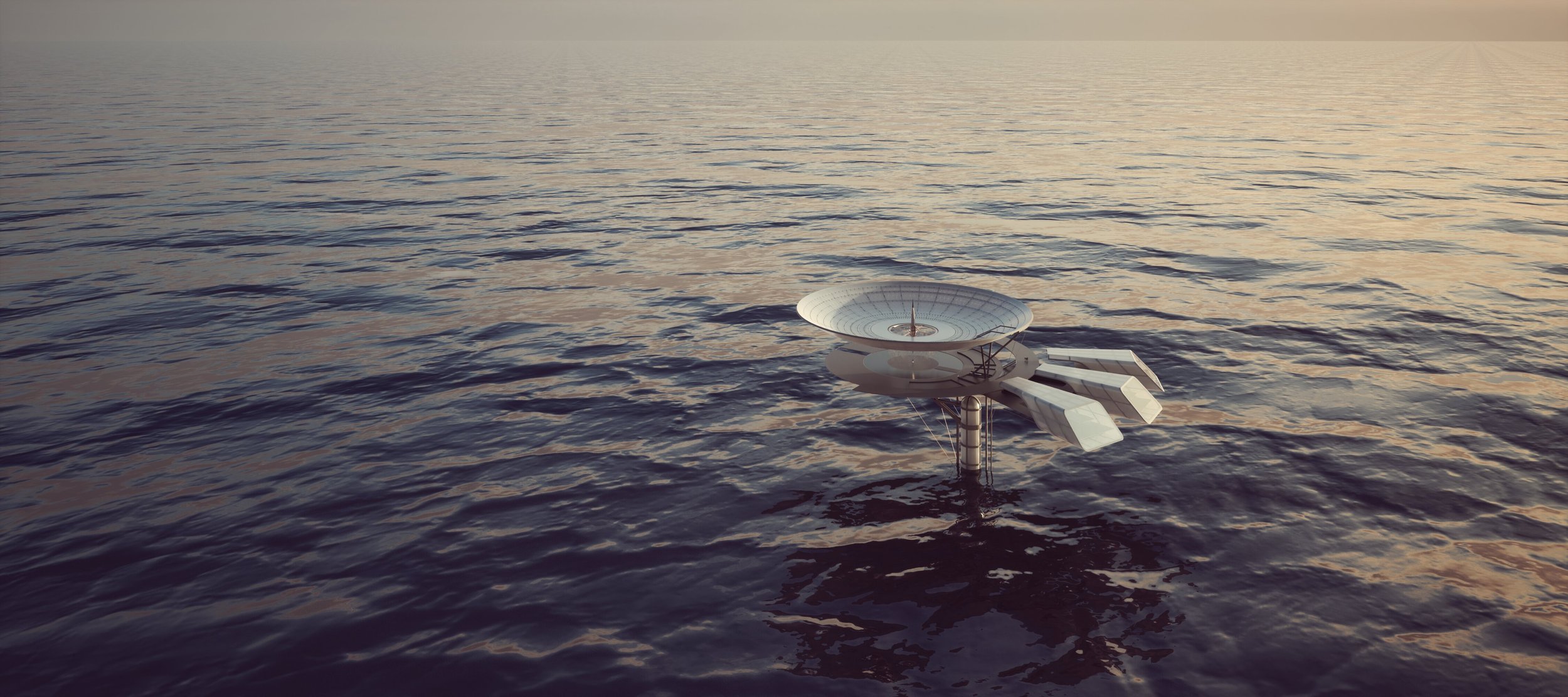
SOLAR CELL _ PUBLISHED
https://maroelamedia.co.za/nuus/sa-nuus/sa-argitekte-in-die-buiteland-vereer/
https://omny.fm/shows/capetalk-breakfast/franschhoek-based-architects-secure-top-internatio
https://chroniques-architecture.com/fondation-jacques-rougerie-palmares-2023-des-prix-architecture/.
https://www.jacquesrougeriedatabase.com/
REFERENCES
Blume, K & Buck, R & Giuliano, S & Hertel, J & Janotte, N & Krause, A & Pfahl, A & Rheinländer, J & Ries, A
& Schlichting, T. 2019. AIP Conference Proceedings 2126, 030042: First lay-down heliostat with monolithic mirror-panel, closed loop control, and cleaning system. [online]. Available from: < https://doi.org/10.1063/1.5117554> [accessed on 9 June 2023].
Fischer, J. 2008. WATER I WASSER I EAU. China: Tandem Verlag GmbH.
Jodidio, P. 2007. Calatrava. Köln: TASCHEN GmbH.
Kalghatgi, S & Serratella, G & Wang, G. 2008. Current practices in condition assessment of aged ships and floating offshore structures. [online]. Available from: <https://www.sciencedirect.com/science/article/abs/pii/B9781845693343500012> [accessed on 28 July 2023].
Klein, S. 2010. Leonardo’s Legacy. Philadelphia: Da Capo Press.
Lupton, E. 2002. Skin: Surface, Substance + Design. New York: Princeton Architectural Press.
Molland, A F. 2008. The Maritime Engineering Reference Book: A Guide to Ship Design, Construction and Operation. [online]. Available from: <https://www.sciencedirect.com/science/article/abs/pii/B9780750689878000093> [accessed on 9 August 2023].
National Geographic Society. 2022. Marine Ecosystems. [online]. Available from: https://education.nationalgeographic.org/resource/marine-ecosystems/ [accessed on 4 June 2023].
Sheikh, K. 2014. New Concentrating Solar Tower Is Worth Its Salt with 24/7 Power. [online]. Available from: <https://www.scientificamerican.com/article/new-concentrating-solar-tower-is-worth-its-salt-with-24-7-power/ > [accessed 17 July 2023].
Sheil, B. 2005. Protoarchitecture: Analogue and Digital Hybrids. Italy: Conti Tipocolor.

